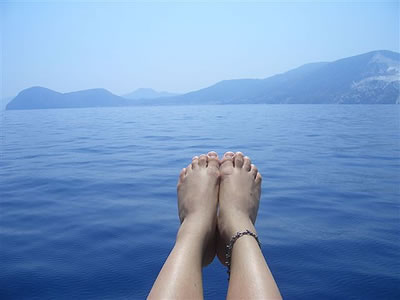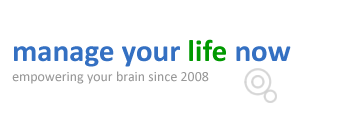
Stress has become an integral component of our life. There are various ways to manage stress in a fast and efficient way. There are techniques that have to do with how we deal with problems – which are the major cause of stress and techniques we can use to relax in order to help our self to manage stress more efficiently. The bottom line is that stress is not a tangible component but it is a perception we have in our mind about different situations. Each situation and each event gets the value that we give them, and thus causing us such stress, as we allow them to.
Stress is not always a bad thing. Instead, it can keep us alert, it can warn us from possible dangers and in essence it helps us to understand what is important or not.
The inability to manage stress can sometimes prove to be dangerous for our health. We must be careful and take the necessary steps to protect ourselves. It is us that can make the difference in whether stress will remain useful or become dangerous for our health. Stress is harmful when we allow it to be.
Tips to help you manage stress fast and efficient
Tip 1. Solve the problems that are causes of stress
Problems in our personal and professional life are among the major causes of stress. Several times we have to offer solutions to various problems or difficult circumstances. There are simple techniques we can use with little effort to address such situations. If we address these situations then it is the first step in managing our stress.
1. Defining the problem: Try to define precisely what bothers you or what is causing you stress. Try to be specific as to what the problem is and work with only one aspect of the problem at a time.
2. Create a list of possible solutions: Try to find and record as many solutions for every aspect of the problem you are concerned about. Try to see how someone else would react in your position. Do not hesitate to ask the advice of others.
3. Evaluation of the “pros” and “cons” of any possible solution: For every possible solution you have found, list the pros and cons, which would result from the possible implementation of this solution. The aim is to find the solution with most “pros” and or less “cons” or the at least painless “cons”.
4. Design: With very specific actions, decide how you will implement the chosen solution. “What exactly will happen when it will happen, who will be involved, where, exactly what steps to follow”, are questions to be answered.
5. Action: Apply the solution.
6. Evaluate the results: If the solution was successful, well done! Apply this method to other problems as well. If the solution did not achieve the expected results, try to check and understand “what went wrong.” Maybe you where over optimistic, maybe you considered the wrong parameters, perhaps a third factor related to the problem was not taken into account. Whatever your conclusion, remember that you did not failed. We all have to expect some unlucky moments in our lives. Learn from your experience and mistakes and try again starting from the 1st step.
Deal with the problems early so that you have the time you need to solve them.
Tip 2. Learn how to relax efficiently
There are two stress relaxation techniques: proper breathing (diaphragmatic) and muscle relaxation.
A) Diaphragmatic breathing
The correct (diaphragmatic) breathing helps us to manage stress in a fast and efficient way. It is a necessity and we need to practice this very often. To practice this exercise you can follow the steps below:
You can start this exercise by lay down and at a later stage when you become more experienced you can use a chair to help you or you can even do the exercises standing.
1. Put one hand on the chest and the other in the stomach.
2. Inhale from your nose and let your stomach to swell. This way you make full use of your lungs. Try to keep the movement of the breast to a minimum, without tightening.
3. Gently and calmly, exhale from your nose.
4. Repeat this steps keeping a pace. The aim is to make 8-12 breathing exercises a minute.
At the beginning you may feel that you do not get enough air, but as you practice you will find that this new way of breathing is better and more efficient.
B) Muscle relaxation
The following technique is very simple but yet it is very effective. It takes only 5-10 minutes to complete. Try it the next time you feel that you are under stress.
1. Sit in a comfortable chair, in a couch or even lay down on the floor and make a few stretching exercises.
2. Let your shoulders and hands to relax in a comfortable position. By shaking slightly, ‘twisting’ and stretching your muscles it helps you relax and it stops intensity.
3. Let the tension escape from your legs, chest and neck in the same manner as above.
4. Feel that the chair, sofa or the floor supports the entire weight of your body. Feel that your hands and your feet are heavy and that you ‘sink’ on the seat.
5. Try to be calm. Relax your jaw and your face.
6. If something disturbing happens or if anything annoying passes through your mind, just ignore it. Do not give attention to any thought.
7. Close your eyes and imagine a scene in a calm place where you enjoy the sunshine, sea or anything else you want. Imagine that you are really in that place.
8. For a few moments keep this relaxed position.
Do not postpone the decision-making, except when you consider that it must be postponed in order to ensure better conditions.
